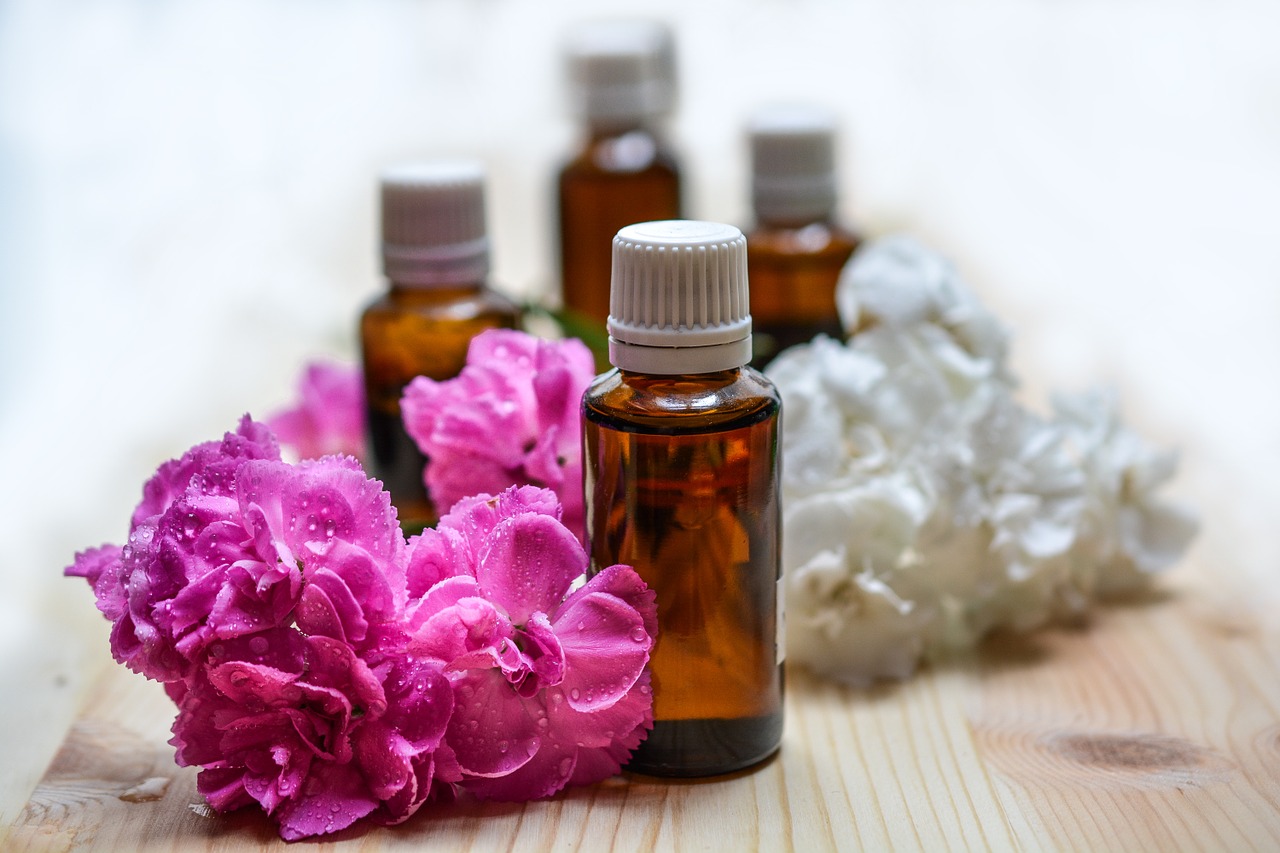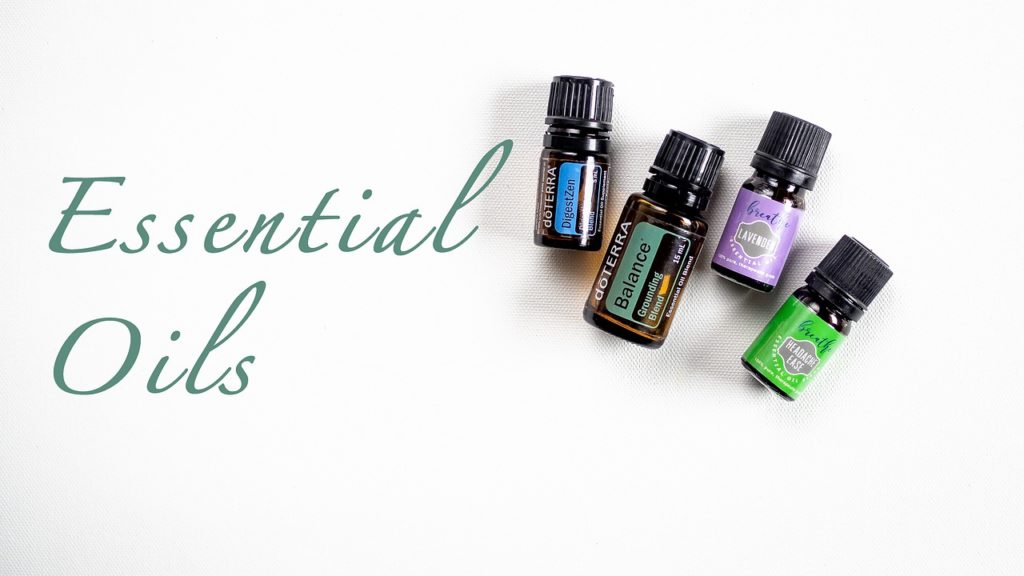Summary
– Step 1: Differentiate the ways of using essential oils
– Step 2: Follow some basic principles
– Step 3: Diffuse essential oils
– Step 4: Treat yourself externally
– Step 5: Treat yourself internally
Essential oils are not harmless products. They must be used wisely and with certain precautions to remain effective and safe.
Here are all the recommendations for the proper use of essential oils.
1. Differentiate the ways of using essential oils
We distinguish three main types of possible uses for essential oils:
– diffusion;
– external use
– internal use.
Diffusion
This atmospheric diffusion will allow you to inhale the essential oil. To avoid altering the essential oil, it should be a cold diffusion.
The external way
It is essentially about direct applications on the skin, but certain precautions are generally taken.
We also speak of external use when oil is mixed with bath water or shampoo.
The internal way
The internal route is the one consisting in ingesting an essential oil. Generally, an essential oil is not taken pure and alone. You can mix it with food such as honey, for example.
2. Follow some basic principles

These recommendations are intended to guide people who wish to use essential oils for self-medication.
Before going further into the different uses you can have of essential oils, there are some basic principles to consider.
– Use quality essential oils to get results.
– Respect the recommended doses without imagining that increasing the doses will give better results.
– Unless otherwise recommended, use essential oils diluted in a suitable carrier:
◦ vegetable oil;
◦ neutral gel;
◦ cream;
◦ soap…
– When blending essential oils, reduce the doses you would have used for those same oils if taken individually.
– Never put essential oil in the eyes. For mucous membranes, prior advice is essential, but in any case, never use them pure (it is preferable to use hydrolats with essential oils for these sensitive areas).
– Some essential oils can cause stains on the skin if you go into the sun after applying them. In general, do not expose yourself to the sun for a whole day (and a fortiori within an hour) after having applied a photosensitizing essential oil (for example, Bergamot essential oil, citrus essential oils, Verbena essential oil, Angelica essential oil, Cumin essential oil, Linden essential oil…).
– Do not use essential oils on children under 3 years old. For children between 3 and 12 years old, you can use essential oils with caution. As a precaution, divide the doses by two and prefer preparations based on mild oils.
– In general, essential oils are not recommended for pregnant women. Although no documented studies have been conducted, the precautionary principle applies, and both pregnant and nursing women should avoid using essential oils.
Note that there are some essential oil remedies specifically designed for children.
Good to know: because of their neurotoxic, irritating, phototoxic, and even carcinogenic properties, 17 essential oils can only be sold in pharmacies. It is, for example, the case of critical oils in wormwood (Artemisia absinthium L. and Artemisia pontica L.), mugwort (Artemisia vulgaris L., Artemisia herba alba Asso L. and Artemisia arborescens L.), tansy (Tanacetum vulgare), cedar (Thuya occidentalis L., Thuya Koraenensis Nakai and Thuya plicata Donn) or sage (Salvia officinalis L.).
3. Diffuse essential oils
To diffuse essential oils effectively, you must use a specific cold diffuser. Indeed, essential oils deteriorate and lose their virtues under the heat.
Candle diffusers are therefore to be avoided.
Existing diffusers
There are two main types of essential oil diffusers:
– The electric diffusers are the most expensive. They are modern and proceed to the diffusion of essential oils by ultrasound or misting (some emit colors or soft light, others have a USB port to be connected to a computer, others also play the role of air purifier and can be remote-controlled).
– Paper or wood diffusers are much less expensive and easier to use. The paper or wood, by capillary action, will diffuse the essential oils into the air. Not using electricity, they are also more economical.
Precautions
In both cases, essential oils are diffused pure, so some oils are less suitable than others because they can be irritating. This will be the case, for example, with essential oils of cinnamon, clove, oregano…
Diffusion time
– In order not to be mistaken, respect the instructions of each device, knowing that it is necessary to count approximately half an hour of diffusion for the large rooms or a quarter of an hour for the smaller ones, like rooms.
– You can also proceed to inhalations. In this case, put 5 to 10 drops of essential oil in a bowl of hot water and limit the inhalation to 10 minutes, keeping the eyes closed.
Caution: for children, remember to diffuse essential oils in their absence.
4. Treat yourself externally
Essential oils are mainly used directly on the skin. Indeed, essential oils have penetration power. They cross the skin by passing through the capillaries and reach the tissues within half an hour to two hours maximum.
Precautions
It is almost systematically recommended to mix them with neutral massage oil or vegetable oil such as sweet almond oil, jojoba oil, macadamia oil, hazelnut oil, apricot kernel oil, argan oil, olive oil… Indeed, pure essential oils are often dermocaustic (irritating).
Unless it is explicitly indicated that you can use the pure, please do not take any risk and mix them before putting them on the skin.
Allergies are not impossible either, especially for sensitive people so you can test the essential oil on the forearm or elbow. This way, you can ensure that you do not have an allergic reaction to a particular oil.
Methods of application
– Used in homeopathic doses, essential oils have a stimulating effect, especially when rubbed in the morning after a shower. Frictions are also interesting for circulatory problems.
On the other hand, in the evening, soft massages will have a relaxing action.
– For a global action, you will make sure to apply the essential oils on energy centers (chakras located on the median line of the body, passing from the edge of the nose to the crotch) or on meridians (for example, in the center of the foot, on the nape of the neck…).
– Essential oils can also be used as a natural perfume (again, be sure to mix the essential oil with vegetable oil).
Dosage
Although the doses vary according to the preparations recommended for such or such affection, you can retain that one uses:
– in massage (to facilitate their penetration), 5 drops of essential oil for 5 ml of vegetable oil (or two drops for a tablespoon) and only 2 drops of essential oil for 5 ml of vegetable oil as regards the face;
– in compresses: a few drops with water (variable according to the recipe);
– in mask for the face:
– Mix:
▪ three spoonfuls of green clay;
▪ one teaspoon of vegetable oil (wheat germ, sesame…);
▪ five drops of essential oil;
◦ a suitable herbal tea (or floral water).
◦ Apply the mask with your fingers and let it dry for about ten minutes.
◦ Then remove it with a moistened cloth (you can use an Alum stone to close the skin’s pores).
– In a bath, 10 drops for 5 ml of neutral gel, bubble bath gel, or a suitable dispersant, knowing that whole milk can do the trick (mix it well before incorporating it into the bathwater) ;
– Pure when possible: 2 drops on the inside of the wrist and massage with the other wrist.
Note that essential oils under one year old are ideal for medical use. Beyond that, they are well suited for rubbing or massaging, but older oils can only be used in baths.
5. Treat yourself internally
Essential oils can be swallowed in some cases. For example, you will find remedies against angina or flu in which it is recommended to mix one or more essential oils with honey, water, or lemon.
Sometimes, it is also possible to dilute certain essential oils with a homeopathic mother tincture.
Precautions
Generally speaking, use hydrolats (floral waters) rather than essential oils for self-medication. In this case, you can pour a tablespoon of floral water into a liter of spring water and drink it all during the day.
In the kitchen
It is also possible to use essential oils in your cooking recipes by not putting more than one or two drops.
The recipes integrating essential oils are rare, but you can safely try marriages such as a fresh tomato salad with a drop of essential oil Basil or a fruit salad with a bit of orange essential oil.
Exceptional use
Much more rarely, specialist therapists may recommend putting essential oils on a tablet, a neutral lozenge, or as a suppository.
Materials for the proper use of essential oils
Green clay
Compress
Essential oil diffuser
Massage oil
Vegetable oil
Essential oils


